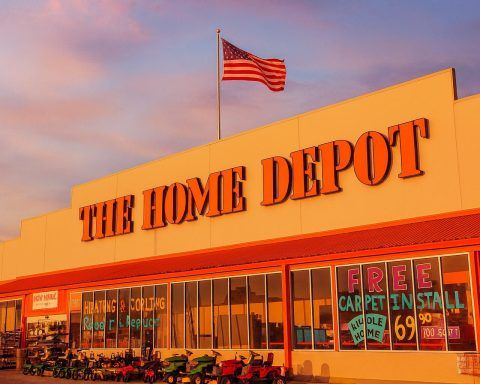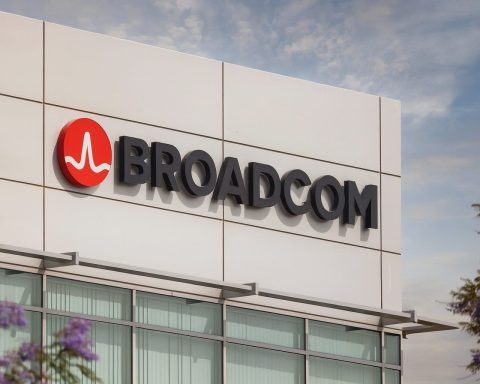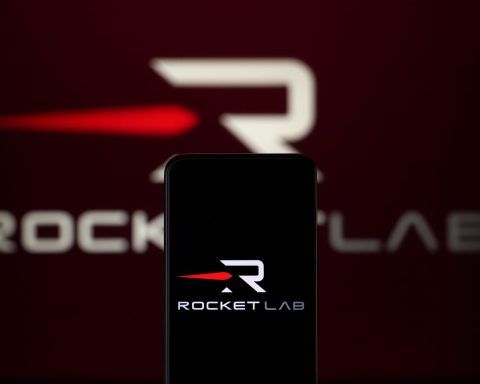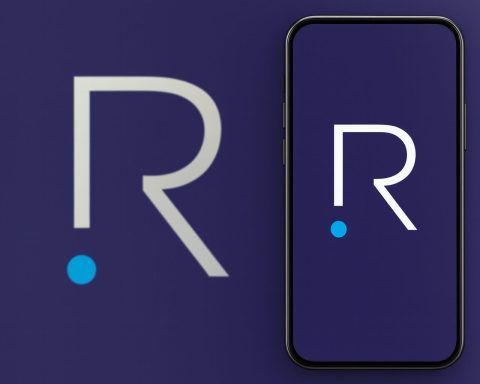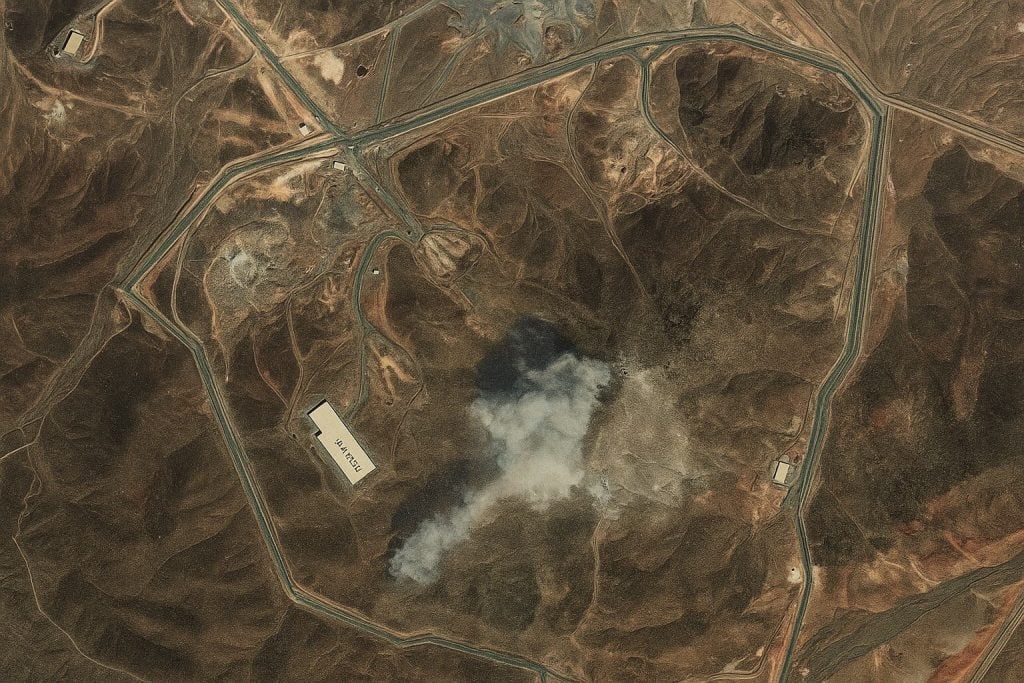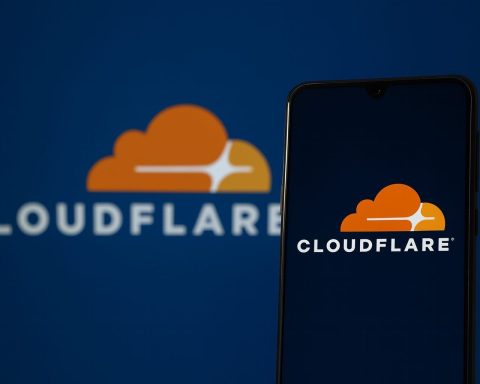- As of early 2025, about 1.01 million Mauritians used the internet, representing roughly 79.5% of the population.
- By 2024 Mauritius had over 2.2 million internet subscriptions, about 178 per 100 inhabitants, indicating many people hold multiple connections.
- Mauritius completed 100% fiber‑to‑the‑home coverage in 2017, with 100% of households passed by fiber and fixed broadband speeds around 55 Mbps on average.
- The island is connected by five major undersea cables—SAFE, LION/LION2, METISS, MARS, and T3—with capacities including ~800 Gbps on SAFE, ~1.28 Tbps on LION, 24 Tbps on METISS, 8 Tbps on MARS, and 18 Tbps (upgradable to 54 Tbps) on T3; a planned T4 aims for petabit‑scale capacity by 2026–27.
- 5G rollout began in 2021, with Mauritius Telecom’s my.t first to launch 5G zones; Emtel followed in 2023 with 5G covering about 60% of the population, aiming for nationwide coverage by end‑2024, and live speeds around 1.8 Gbps.
- Mauritius Telecom (my.t) remains the dominant operator with about 60% mobile subscribers, Emtel about 22%, and MTML (Chili) around 17%.
- On mobile, Mauritius has over 2.14 million active SIMs, about 168% teledensity, and 99% population coverage for 3G/4G on the main island.
- Rodrigues Island (population ~40,000) gained a high‑speed fiber link via the MARS cable in 2019, and in 2025 Mauritius launched a OneWeb ground station with Eutelsat to provide LEO satellite backup over a 3,500 km radius.
- The government’s Wi‑Fi Mauritius program deployed free public hotspots at about 350 locations (2017–2018), each with a 10 Mbps fiber link.
- Affordability trends in 2022–2023 saw a 50 Mbps home plan around MUR 1,100/month (~$25) and 100 Mbps around MUR 1,200, with mobile data around $0.75–$1.00 per GB and 0.7% of GNI per capita for a 100‑minute mobile basket.
Overview of Internet Access in Mauritius
Mauritius, known for its remote tropical locale, boasts one of Africa’s highest rates of internet connectivity. As of early 2025, an estimated 1.01 million Mauritians were using the internet, representing about 79.5% of the population [1]. In fact, the country now has more broadband subscriptions than people – over 2.2 million internet subscriptions by 2024 (roughly 178 subscriptions per 100 inhabitants) [2]. This figure reflects the common use of multiple connections per person, such as a home fiber line alongside mobile data on smartphones. Virtually all internet access in Mauritius is broadband, with narrowband (dial-up) now practically extinct [3] [4].
Mobile broadband dominates usage, accounting for about 82% of total broadband subscriptions [5]. In 2022, out of ~1.86 million broadband subscriptions, 1.52 million were mobile (3G/4G/5G) and only ~334,000 were fixed (wired/wireless) connections [6]. This gap has been widening as mobile internet grows faster – mobile internet subscriptions rose 8% in 2022, versus 1.6% growth in fixed lines [7] [8]. Household connectivity is also high: by 2020, about 72.6% of households had internet access at home, up from ~69.7% in 2018 [9]. Internet use is nearly universal among young people (over 95% of ages 12–29 were online in 2020), though lower among older demographics [10] [11]. Overall, roughly two-thirds of Mauritians were internet users in 2020, and this has grown to nearly four-fifths by 2025 as digital access continues to expand [12].
Broadband coverage is extensive. Mobile networks cover 99% of the population with at least 2G/3G/4G signal [13]. Fourth-generation (4G LTE) service is essentially ubiquitous, and even 5G networks are rolling out (more on that below). On the fixed side, Mauritius undertook an aggressive fiber-optic deployment — achieving 100% fiber-to-the-home coverage by 2017 [14] [15]. Today every town and village has access to high-speed fiber broadband, a unique achievement on the continent. As a result, fixed broadband speeds have improved markedly; for example, the average download rate on fixed lines is around 55 Mbps [16], and entry-level home fiber plans now offer 50 Mbps or higher speeds [17]. This pervasive connectivity has transformed Mauritius into a true “Cyber Island,” supporting everything from e-government services to an ICT-driven economy.
Major ISPs and Telecommunications Providers
Despite its small size, Mauritius has a competitive telecom sector with multiple operators. As of 2022, there were 11 licensed Internet Service Providers (ISPs) and 3 mobile network operators, alongside 2 fixed-line telephone providers [18]. The market is led by a few key players:
- Mauritius Telecom (MT) – the former state monopoly and still the dominant telecom operator. Through its consumer brand my.t (pronounced “my tee”), MT offers fixed broadband (fiber-to-home), mobile services, and IPTV. It controls the national fixed-line network and holds about 61% of mobile subscribers [19] [20]. Part-owned by the government and Orange S.A., Mauritius Telecom has spearheaded major infrastructure projects (international cables, island-wide fiber) and launched Africa’s first 1 Gbps home broadband service [21] [22].
- Emtel – the first mobile operator in Mauritius (launched 1989) and now a broad telecom provider. Emtel has roughly 22% mobile market share [23] and provides mobile voice/data, fixed wireless broadband, and some fiber services. It is known for innovation – for example, Emtel launched 5G in 2023, becoming the second operator to do so [24]. Emtel is jointly owned by Currimjee Jeewanjee (Mauritian conglomerate) and Airtel Africa. It also invests in international connectivity (as part of the METISS submarine cable consortium) and, notably, in satellite broadband initiatives (discussed later).
- MTML (Chili) – Mahanagar Telephone Mauritius Ltd, a subsidiary of India’s MTNL, operates under the brand Chili. It is the third mobile operator with about 17% share of subscribers [25]. Chili targets budget-conscious users and offers mobile voice/data (initially via CDMA, now 4G). It was also granted a 5G license in 2021 alongside the other operators [26], though its 5G rollout status is modest compared to larger rivals.
- Other ISPs – Several smaller ISPs serve niche or enterprise markets. Bharat Telecom (Mauritius) rolled out a fiber network in select areas, offering FTTH services as an alternative to MT. Paratus (a pan-African operator) has a presence, and companies like Huawei Marine Networks, CEB Fibernet (a utility-backed provider), and others contribute to wholesale bandwidth or corporate connectivity [27] [28]. Many of the “11 ISPs” are focused on business solutions, international bandwidth resale, or specialized services, while the consumer internet space is dominated by the big three (my.t, Emtel, Chili).
Below is a summary of the major telecommunications providers in Mauritius:
| Provider | Services | Market Position | Notes |
|---|---|---|---|
| Mauritius Telecom (my.t) | Fixed telephony; Fiber broadband; Mobile (my.t Mobile); TV | Largest operator (≈60% mobile share) [29]; national backbone owner | Part government-owned; 100% island-wide fiber coverage [30] [31]; Launched first 5G zones in 2021 [32]. |
| Emtel | Mobile (2G/3G/4G/5G); Fixed wireless and FTTH in some areas; Enterprise services | 2nd largest mobile operator (≈22% share) [33] | First to launch mobile services in 1989; 5G launched 2023 with 60% population coverage [34] [35]; Part of METISS submarine cable consortium. |
| MTML (Chili) | Mobile (voice, 4G data); some fixed wireless offerings | 3rd mobile operator (≈17% share) [36] | Backed by India’s MTNL; Focus on low-cost plans; Received 5G license (2021) [37], but limited 5G deployment so far. |
| Bharat Telecom | Fixed broadband (fiber to home) | Niche FTTH provider (small market share) | GPON fiber network in parts of island; entry of new investors has been limited by MT’s dominance. |
| Other ISPs (Various) | Enterprise data services; international gateway; VSAT/satellite | — | e.g. Paratus, Huawei (MT), CEB Fibernet, etc., providing corporate internet, data center, or wholesale bandwidth services. |
(Market share figures are for mobile subscribers as of mid-2023) [38].
Government Initiatives and Digital Strategies
The Mauritian government has long viewed ICT as the “fifth pillar” of the economy, branding the nation a “Cyber Island.” To realize this vision, authorities have launched ambitious digital strategies:
- Digital Mauritius 2030 – A national strategic plan aiming to transform Mauritius into a fully-fledged digital economy by 2030. This strategy emphasizes widespread connectivity, digital literacy, e-government, and tech innovation. It outlines goals such as improving broadband quality, fostering ICT startups, and expanding e-services in both public and private sectors [39] [40]. Under this framework, Mauritius has implemented digital government services, and even a “Mobile ID” system for citizens (a secure digital identity on smartphones) to enable online transactions and e-government access [41].
- Smart Island and Smart Cities – The government’s Smart City Scheme integrates ICT into urban development, encouraging new projects with high-speed connectivity, IoT infrastructure, and tech-enabled services. Although primarily an urban planning initiative, it dovetails with telecom goals by requiring robust fiber and 5G coverage in new smart cities and providing incentives for telecom investments in those areas. The broader “Smart Mauritius” concept also includes smart education (equipping schools with broadband), smart healthcare (telemedicine), and smart agriculture (IoT for farms), all underpinned by nationwide internet access.
- National Broadband Policy – Earlier policies (e.g. NBP 2012–2020) laid the groundwork for today’s high penetration, by liberalizing the telecom sector and setting targets for universal broadband access. Universal service funds were utilized to extend connectivity to underserved communities. For example, the government, through the ICT Authority (ICTA), deployed “Wi-Fi Mauritius” – free Wi-Fi hotspots in public areas. By 2017–2018, around 350 locations (community centers, libraries, bus stations, public beaches, even Rodrigues island sites) were equipped with free Wi-Fi, each with a 10 Mbps fiber link [42]. This initiative helps bridge the digital divide by providing basic internet access in low-income or rural areas at no cost.
- E-Government and Digital Services – Mauritius consistently ranks high in Africa for e-government. The government offers online portals for tax filing, business registration, permit applications, etc. The IT Infrastructure of government has been upgraded (with a Tier IV National Data Centre and Government Online Centre), and efforts like the Digital Transformation Blueprint (2025–2029) focus on modernizing public service delivery through digital means [43] [44]. During a Digital Strategy Alignment workshop in 2025, stakeholders set out key pillars: building state-of-the-art “info-structure” for public services, improving digital skills among citizens, fostering tech entrepreneurship, and promoting sustainable tech (green IT) [45] [46]. These efforts are supported by international partners like UNDP, reflecting Mauritius’ determination to remain on the leading edge of digital development.
Overall, Mauritius’ leadership has shown strong commitment to connectivity and digital innovation as drivers of economic growth. The country regularly updates its ICT strategies to incorporate emerging technologies (AI, blockchain, fintech) and ensure that infrastructure keeps pace with demand. This pro-active governance is a major reason the island has become a regional ICT success story, despite its small size and remoteness.
Infrastructure Status: Undersea Cables, Mobile Networks, and Fiber
Ensuring a fast and resilient internet in an island nation requires robust infrastructure. Mauritius has invested heavily in international submarine cables, domestic fiber, and wireless networks:
- Submarine Fiber Optic Cables: Being isolated in the Indian Ocean, Mauritius connects to the global internet primarily via undersea fiber cables. As of 2025, the island is linked by multiple high-capacity cables:
- SAFE (South Africa Far East): Operational since 2002, SAFE was Mauritius’ first submarine cable, landing on the island’s south coast [47]. It runs from South Africa to Asia (Malaysia) with a branch through Mauritius and Réunion. After upgrades, SAFE still provides about 800 Gbps capacity (shared among countries) [48]. However, it is nearing end-of-life (planned for decommission by ~2027) [49] [50].
- LION & LION2 (Lower Indian Ocean Network): Launched in 2009–2012, these cables connect Mauritius with Madagascar, Réunion, and Kenya (LION2 extends to East Africa) [51]. LION has a design capacity around 1.28 Tbps [52]. It links into regional cables like EASSy (Eastern Africa Submarine System) and EIG (Europe-India Gateway) via Kenya, providing a “north route” from Mauritius to Europe [53] [54].
- MARS (Mauritius–Rodrigues Submarine Cable): A 700 km domestic cable opened in 2019 connecting Mauritius’ main island to Rodrigues (a small outer island ~600 km away) [55]. MARS has a design capacity of 8 Tbps and initially lit 100 Gbps [56]. It dramatically improved internet in Rodrigues (population ~40,000), which previously relied on satellite.
- METISS (Melting Pot Indianoceanic Submarine System): A newer consortium cable completed in 2021, METISS connects Mauritius to South Africa (landing near Durban) via Réunion and Madagascar. It offers 24 Tbps design capacity [57]. Interestingly, Mauritius Telecom did not initially invest in METISS; instead it was driven by other operators (like Emtel and French operators) to provide an additional route [58]. METISS lands on Mauritius’ east coast and provides a second connection to mainland Africa (complementing SAFE).
- T3 (Mauritius–South Africa): The latest addition, landed in March 2023, T3 is a direct cable from Mauritius to South Africa built by Mauritius Telecom in partnership with Liquid Intelligent Technologies [59] [60]. T3 spans ~3,200 km from Baie Jacotet (Mauritius) to Amanzimtoti, South Africa. It has at least 18 Tbps of capacity (upgradable to 54 Tbps) across four fiber pairs [61]. The T3 cable went live in late 2023, fortifying the island’s westward route. Mauritius Telecom invested about $60 million in T3 [62] to boost bandwidth for cloud services, streaming, and future growth [63].
- Planned T4 Cable: To address the impending retirement of SAFE, plans are underway for a “T4” cable linking Africa to Asia via Mauritius. Expected by 2026–27, T4 will follow a similar route as SAFE (South Africa → Madagascar/La Réunion → Mauritius → India → Singapore) [64]. It is touted to have 1000× the capacity of SAFE (potentially in the petabit range) [65]. Talks are ongoing with international partners (Reliance Jio, Orange, etc.) to build this big pipe, which will ensure Mauritius remains well-connected even after SAFE’s decommissioning [66] [67].
- Fiber Optic Backbone and FTTH: Within the country, fiber optic networks blanket the entire island. Mauritius Telecom completed an island-wide fiber backbone and FTTH rollout by end of 2017 [72] [73]. Copper ADSL lines have largely been phased out in favor of fiber-to-the-home. As a result, 100% of households are passed by fiber infrastructure [74], and by 2022 the minimum home broadband package was 10 Mbps, now upgraded to 50 Mbps baseline speed for new subscriptions [75] [76]. Businesses can get fiber up to 10 Gbps, and a Tier IV national data center supports local hosting [77] [78]. The extensive fiber backbone also connects mobile towers and public facilities, ensuring high capacity backhaul across Mauritius.
- Mobile Network and Towers: The mobile network footprint is essentially universal on the main island (99% population coverage) [79] and extends to inhabited outer islands. There are over 2.14 million mobile connections active (SIMs) in Mauritius, equivalent to 168% of the population [80] – many people carry dual SIMs or separate work/personal phones. The country moved quickly through mobile generations: GSM, then nationwide 3G by late 2000s, 4G LTE by 2012, and now 5G. 4G LTE covers virtually 100% of inhabited areas, providing broadband speeds wirelessly. 5G deployment began in 2021 when the regulator (ICTA) issued spectrum to all three operators [81]. Mauritius Telecom’s my.t mobile was first with 5G hot-zones in mid-2021, and by mid-2023 Emtel launched its 5G network covering 60% of the population [82] [83]. Emtel planned full 5G coverage by end of 2024 [84]. Early 5G is concentrated in urban and high-demand areas (e.g. Port Louis, business districts, and tech hubs), with speeds up to ~1.8 Gbps observed on live networks [85]. 5G Fixed Wireless Access (FWA) products have also been introduced (e.g. Emtel’s “Airbox 5G” for home internet) targeting areas not reached by fiber or as an alternative to wired broadband [86].
Mauritius’ telecom infrastructure is one of the most advanced in the region, enabling the island to leapfrog many larger countries in connectivity. The combination of ubiquitous fiber, modern mobile networks, and multiple submarine cables provides a solid foundation for current and future digital needs. The table below summarizes key components of this infrastructure:
| Infrastructure | Status and Details |
|---|---|
| International Submarine Cables | 5 active cables (SAFE, LION/LION2, METISS, MARS, T3) providing diverse routes [87] [88]. Planned T4 cable to add massive new capacity by ~2026 [89] [90]. Total international capacity in tens of terabits; resilient multi-route network. |
| Fiber-to-the-Home Network | 100% coverage of all towns and villages with fiber (completed 2017) [91] [92]. Over 334,000 fixed broadband subscriptions (2022) [93], all on broadband (mostly fiber). Entry-level speeds 50 Mbps; 1 Gbps home plans available [94]. |
| Mobile Network Coverage | 99% 3G/4G population coverage [95] on main island (and coverage in Rodrigues via local towers). As of 2023, about 95.8% of mobile connections are 3G/4G/5G capable [96]. 5G launched 2021–2023; ~50–60% population covered early 2024 [97] [98], expanding toward nationwide coverage. |
| Mobile Subscribers | 2.1 million+ mobile subscriptions (168% teledensity) [99]. Three operators with extensive tower infrastructure; many sites upgraded to 4G and gradually to 5G. Mobidensity 166 per 100 people [100] (many users carry multiple SIMs/devices). |
| Domestic Backbone & IX | Fully fiber-optic domestic backbone connecting all regions. At least one Internet Exchange Point (IXP) in Mauritius for local traffic peering, and major content providers host caches locally (Google, Netflix, Facebook etc.) to improve speed [101]. Data centers: Tier IV national data center and others hosting cloud and enterprise services. |
Internet Access in Rural and Remote Areas
Mauritius has relatively little urban-rural digital divide compared to larger countries. Although ~59% of the population lives in rural areas [102], even small villages enjoy fiber connectivity and mobile coverage. Since the island is only ~2,040 km², the same infrastructure that covers cities also reaches most rural settlements. Fiber-to-the-home lines pass nearly all households, whether in cities or countryside, thanks to the island-wide rollout completed in 2017 [103]. Mobile base stations are distributed such that 2G/3G/4G signals cover practically all inhabited zones [104]. Consequently, rural inhabitants can access similar broadband packages as urban residents – a remarkable achievement in bridging the connectivity gap.
That said, challenges in rural areas are more about adoption and affordability than availability. Some remote communities (particularly older residents or low-income households) have been slower to adopt home internet, even when the infrastructure exists. The government’s free Wi-Fi hotspot project (Wi-Fi Mauritius) specifically targeted community centers and public areas in rural villages to encourage internet use where people might not otherwise subscribe [105]. By providing free access in these areas (with usage limits), the program has introduced many to the online world and helped drive up digital literacy outside the cities.
The primary truly remote region in the Republic is Rodrigues Island, which lies far to the east of Mauritius. Prior to 2019, Rodrigues relied on satellite links, resulting in slower speeds and higher costs for its 40,000 residents. The launch of the MARS submarine cable in 2019 changed this dramatically: Rodrigues now has a high-speed fiber connection to Mauritius (and thus to the global internet) [106]. Broadband services (both fixed and mobile 4G) in Rodrigues have since expanded, though the island’s smaller population and economy mean uptake is still growing. Rodrigues is also benefiting from the new LEO satellite service (discussed below) for redundancy. Other outer islands (Agalega, St. Brandon) are sparsely populated; they remain dependent on satellite communication for basic connectivity due to their minuscule communities and lack of fiber links.
In summary, Mauritius has largely eliminated geographical disparities in internet access on the main islands. Virtually every community can get broadband, and the government’s universal access policies have focused on ensuring even the most remote citizens are not left offline. Ongoing initiatives in digital literacy and subsidized access aim to close any remaining gaps in usage. As a result, rural Mauritians are coming online nearly at the same rate as urban residents – a rare case in the developing world where countryside connectivity almost equals that of the city [107].
Affordability and Internet Pricing Trends
Internet access in Mauritius has become more affordable over time, though it is still a significant expense for some households. The competitive provider landscape and government oversight have led to steady improvements in price-to-speed value:
- Broadband Price as % of Income: A standard home internet plan (e.g. fiber 10 Mbps with 150 GB in 2022) cost about 1.8% of Gross National Income (GNI) per capita per month, down from 2.2% the year before [108] [109]. This meets the UN Broadband Commission’s affordability target (<=2% of monthly income). With recent upgrades, the base plan now offers higher speeds (20–50 Mbps) at similar or slightly increased price, meaning the cost per Mbps has fallen.
- Fixed Broadband Packages: Mauritius Telecom (my.t) offers fiber plans at various tiers – for instance, in 2023 a 50 Mbps home broadband plan cost around MUR 1,100/month (~USD $25), and 100 Mbps around MUR 1,200 [110]. These plans often include IPTV and unlimited night-time data. Emtel’s Airbox (fixed wireless) and Bharat Telecom’s fiber plans are priced competitively as well. Overall, broadband pricing in Mauritius is lower than in many African countries for comparable speeds, though not as cheap as in developed economies.
- Mobile Data Costs: Mobile internet is relatively affordable. Prepaid data packages are available at low denominations, and the price per GB has dropped with 4G and now 5G. The average cost of 1 GB mobile data in Mauritius was roughly $0.75–$1.00 as of 2022 (varying by package) – among the cheapest in Africa. The ICTA has monitored prices and reported that the cost of a 100-minute mobile basket was only 0.7% of GNI per capita in 2022 [111] [112], reflecting competitive voice/SMS pricing. Unlimited mobile data packages were introduced (my.t was first to offer truly unlimited plans in 2019) [113], though with fair-use throttling after high usage.
- Market Competition and Regulation: The presence of three mobile operators keeps data tariffs in check. The regulator ICTA also periodically compares tariffs and has encouraged promotional offers. For example, when my.t launched 5G, it bundled extra data for 5G users; Emtel responded with aggressive pricing on its 5G FWA service. The government has a stated policy of making broadband accessible to all, and can intervene if monopoly pricing is detected. The Universal Service Fund (USF) has been used not only for Wi-Fi hotspots but also to subsidize connectivity for schools and community centers, effectively lowering the cost burden on users in those segments.
- International Bandwidth Costs: As Mauritius secures more submarine cable capacity, the wholesale cost of international bandwidth has dropped. This has enabled ISPs to offer higher caps and speeds without raising prices. We see this in the fact that while total international bandwidth usage jumped ~12% in 2022, the internet tariff (20-hour access basket) fell to 1.8% of income [114] [115]. In short, users are getting more data for the same money year by year.
Despite these positive trends, affordability can still be a barrier for lower-income groups. A segment of the population (especially those earning minimum wage or in the informal sector) may find even $20/month for home internet too high. Many of them rely solely on mobile data, topping up in small increments (which per GB is costlier). The government’s continued effort in providing free Wi-Fi zones and promoting community internet access is aimed at these groups. There have also been discussions about expanding low-income broadband packages or “internet light” plans with basic service at very low cost, to ensure inclusivity.
In summary, internet access in Mauritius is getting cheaper and faster. By regional standards, both fixed and mobile broadband are affordably priced relative to incomes. The combination of competition, regulatory oversight, and new infrastructure (which lowers underlying costs) has created a virtuous cycle of better value for consumers. As Mauritius pushes toward its digital economy goals, maintaining affordability will be key so that no Mauritian is priced out of the online world.
Satellite Internet: Reaching Further, Adding Resilience
Even with extensive fiber and mobile coverage, Mauritius is leveraging satellite internet from space to complement its terrestrial networks. Satellite connectivity provides an extra layer of redundancy and can serve locations or situations where traditional networks fall short. There are a few facets to the role of satellite broadband in Mauritius:
- Legacy Satellite Use: Before fiber cables, Mauritius relied on geostationary satellites for international connectivity. While now largely superseded by subsea fiber, satellites still serve as a backup. The National Disaster Strategy keeps satellite links ready in case undersea cables experience simultaneous faults (e.g. due to undersea earthquakes). Also, very remote spots like scientific stations or ships in Mauritian waters use VSAT terminals.
- Outer Islands Connectivity: The small outer islands of Mauritius (such as Agalega, population ~300) are too remote to justify submarine cables. Satellite remains their primary link for telephone and internet. The government has provided basic satellite broadband to these communities (enough for essential services). As satellite technology improves, speeds to these islets have increased modestly, though still far behind fiber speeds on the main islands.
- Starlink and LEO Constellations: The global wave of Low-Earth Orbit (LEO) satellite internet has arrived in Mauritius. In 2023–2024, SpaceX’s Starlink listed Mauritius as a target country for service (initially projected in 2024, now expected by 2025 pending licensing) [116]. However, before Starlink became active, Mauritius pursued a partnership with OneWeb (the LEO constellation now operated by Eutelsat). In June 2025, Emtel and Eutelsat launched Mauritius’ first LEO satellite internet service [117]. They established a OneWeb ground station in Mauritius and introduced broadband via OneWeb’s satellites. This service offers high-speed, low-latency connectivity covering Mauritius and a 3,500 km radius around it [118] [119]. The initial focus is on providing a backup for critical connectivity and serving Rodrigues and other areas if the fiber link or terrestrial network goes down [120] [121]. In essence, Mauritius is “beaming broadband from space” to ensure that even if a cable is cut, the islands stay online.
- Use Cases for Satellite Broadband: The new LEO services are particularly valuable for Rodrigues Island’s resilience. Rodrigues now doesn’t have to rely on its single MARS cable alone – a satellite backup can keep internet and phone services running if that cable fails [122] [123]. Additionally, enterprise customers (banks, government agencies) in Mauritius might use satellite links for redundancy or in disaster recovery scenarios. Another niche use is in the fishing and maritime industry; boats or remote lodges can connect via satellite where mobile signals don’t reach. Once Starlink or OneWeb user terminals become readily available, even individuals in Mauritius could subscribe for specialized needs (though likely at a premium cost).
- Regulatory Stance: The government has been open to new satellite tech, as evidenced by licensing the OneWeb ground station. However, full Starlink entry may be managed to ensure it complements rather than undercuts local operators. It’s possible Starlink will partner with a Mauritian entity or have to meet local gateway requirements. In any case, by embracing LEO satellites early through Emtel-OneWeb, Mauritius signaled its intent to use every tool available to boost connectivity – land or sky.
In a figurative sense, Mauritius is covering all bases: undersea, on land, and now in space. While satellite internet will likely remain a supplementary service (given the strength of fiber and mobile networks on the ground), it plays a crucial strategic role for reliability. As climate change and other risks threaten undersea cables, having an overhead broadband option ensures that this paradise island can stay connected to the world, come what may.
Future Outlook: 5G, Digital Transformation and Emerging Tech
Mauritius’ digital journey is far from over – in fact, the next few years promise even greater advancements as the country embraces 5G, smart technologies, and digital transformation initiatives:
- Nationwide 5G and IoT: By the end of 2025, Mauritius is on track to achieve nationwide 5G coverage. Operators are rapidly expanding 5G base stations beyond the initial urban centers [124] [125]. This will unlock new possibilities in the Internet of Things (IoT) and smart services. For example, high-speed 5G will support smart city applications (intelligent traffic systems, CCTV surveillance, environmental sensors) and industrial IoT in manufacturing and port operations. Telecom analysts project that while only ~2% of Mauritian mobile users were on 5G in 2022, over 25% will be on 5G by 2028 [126] as 5G phones become standard [127]. The operators also plan to use 5G for fixed wireless access in any remaining broadband “not-spots” and as a competitor to fiber in some markets.
- Digital Government & Economy: The government’s Digital Mauritius 2030 agenda means more public services will move online. By 2030, citizens should be able to do most government transactions (from renewing licenses to consulting doctors via telemedicine) digitally. The Digital Transformation Blueprint 2025–2029 is currently guiding this, focusing on user-centric e-government and improving cyber-security and digital trust [128] [129]. We can expect Mauritius to continue investing in AI and data analytics for public service efficiency – for instance, AI chatbots for government queries or using big data to improve tourism services. The country’s robust connectivity makes it feasible to implement cutting-edge tech such as smart grids, tele-education platforms, and digital finance (Mauritius is already a financial hub, and it’s exploring fintech and blockchain integration into its economy).
- Emerging Technologies: Beyond 5G, Mauritius is positioning itself to benefit from emerging tech. The island has tested drone-based services (for deliveries and agricultural monitoring) which rely on strong wireless networks. There’s also interest in blockchain; the government was one of the first in Africa to propose a framework for cryptocurrency and blockchain businesses, leveraging its connectivity and regulatory stability. In addition, renewable energy management is being enhanced via IoT – sensors and connected devices optimize energy use in this import-dependent nation. All these innovations depend on the high-bandwidth, low-latency networks that Mauritius has built.
- International Collaboration: Mauritius will continue to collaborate with tech leaders globally. The presence of local caches for Google, Facebook, etc., could expand to perhaps hosting regional cloud data centers, given the stable power and connectivity (Mauritius Telecom’s Tier IV data center is a selling point [130]). The country is also active in Smart Africa Alliance and other forums, sharing best practices on digital policy. We might see Mauritius advising other Small Island Developing States on how to achieve near-universal internet access.
- Challenges and Opportunities: A key challenge ahead is ensuring cybersecurity and resilience. As Mauritius goes more digital, it must protect against cyber threats. The government has drafted laws on data protection and is establishing a national CERT (Cyber Emergency Response Team). On the opportunity side, Mauritius can capitalize on its connectivity to attract more BPO (business process outsourcing) and tech companies. With remote work on the rise, Mauritius – with its idyllic environment and fast internet – could become a remote work haven or a regional tech start-up hub. The groundwork (infrastructure, policy) is largely in place; the next step is nurturing the human capital and entrepreneurial ecosystem to fully leverage it.
In conclusion, Mauritius has transformed itself into a model of digital development. From near-zero internet penetration in the 1990s, it now stands at almost 80% usage and climbing [131]. Broadband is accessible virtually everywhere on the island, delivered through an impressive mix of fiber optics, cellular networks, and even satellites. Government initiatives have aligned with tech progress to ensure that this connectivity translates into socio-economic benefits. As 5G matures and new technologies emerge, Mauritius is well poised to beam even brighter in the digital age – truly an example of how a small island nation can harness broadband (even from space) to overcome its isolation and thrive in the global digital economy.
Sources:
- Statistics Mauritius – “ICT Access and Usage Statistics 2022.” July 2023. [132] [133] [134]
- DataReportal – “Digital 2025: Mauritius.” Kepios/We Are Social report, Jan 2025. [135] [136]
- Connecting Africa (Paula Gilbert) – “Emtel launches 5G in Mauritius.” Aug 3, 2023. [137] [138]
- DatacenterDynamics – “T3 subsea fiber cable lands in Mauritius.” Mar 27, 2023. [139] [140]
- Techpoint Africa (Osamu Ekhator) – “Mauritius Telecom to get new subsea cable (T4) to link Africa to Asia.” Apr 30, 2024. [141] [142]
- TechAfrica News – “Emtel & Eutelsat launch Mauritius’ First LEO Satellite Internet.” June 4, 2025. [143] [144]
- Mauritius Telecom – Company Profile. (Accessed 2025). [145] [146]
- ICT Authority (Mauritius) – “Observatory: Internet Statistics 2024.” (Accessed 2025). [147] [148]
- United Nations (UNDP) – “Supporting Digital Transformation in Mauritius.” May 29, 2025. [149] [150]
References
1. datareportal.com, 2. www.icta.mu, 3. statsmauritius.govmu.org, 4. statsmauritius.govmu.org, 5. statsmauritius.govmu.org, 6. statsmauritius.govmu.org, 7. statsmauritius.govmu.org, 8. statsmauritius.govmu.org, 9. statsmauritius.govmu.org, 10. www.undp.org, 11. www.undp.org, 12. datareportal.com, 13. statsmauritius.govmu.org, 14. www.telecom.mu, 15. www.telecom.mu, 16. www.worlddata.info, 17. www.telecom.mu, 18. statsmauritius.govmu.org, 19. www.connectingafrica.com, 20. www.connectingafrica.com, 21. www.telecom.mu, 22. www.telecom.mu, 23. www.connectingafrica.com, 24. www.connectingafrica.com, 25. www.connectingafrica.com, 26. www.connectingafrica.com, 27. www.consultingjulian.com, 28. techpression.com, 29. www.connectingafrica.com, 30. www.telecom.mu, 31. www.telecom.mu, 32. www.telecom.mu, 33. www.connectingafrica.com, 34. www.connectingafrica.com, 35. www.connectingafrica.com, 36. www.connectingafrica.com, 37. www.connectingafrica.com, 38. www.connectingafrica.com, 39. mdpa.govmu.org, 40. www.undp.org, 41. mobileidworld.com, 42. ist-africa.org, 43. www.undp.org, 44. www.undp.org, 45. www.undp.org, 46. www.undp.org, 47. www.consultingjulian.com, 48. www.consultingjulian.com, 49. techpoint.africa, 50. techpoint.africa, 51. www.consultingjulian.com, 52. www.consultingjulian.com, 53. www.telecom.mu, 54. www.telecom.mu, 55. www.datacenterdynamics.com, 56. en.wikipedia.org, 57. www.consultingjulian.com, 58. www.consultingjulian.com, 59. www.datacenterdynamics.com, 60. www.datacenterdynamics.com, 61. www.datacenterdynamics.com, 62. techpoint.africa, 63. www.datacenterdynamics.com, 64. techpoint.africa, 65. techpoint.africa, 66. techpoint.africa, 67. techpoint.africa, 68. www.telecom.mu, 69. www.telecom.mu, 70. techpoint.africa, 71. statsmauritius.govmu.org, 72. www.telecom.mu, 73. www.telecom.mu, 74. www.telecom.mu, 75. www.telecom.mu, 76. www.telecom.mu, 77. www.telecom.mu, 78. www.telecom.mu, 79. statsmauritius.govmu.org, 80. datareportal.com, 81. www.connectingafrica.com, 82. www.connectingafrica.com, 83. www.connectingafrica.com, 84. www.connectingafrica.com, 85. www.connectingafrica.com, 86. www.connectingafrica.com, 87. www.datacenterdynamics.com, 88. www.datacenterdynamics.com, 89. techpoint.africa, 90. techpoint.africa, 91. www.telecom.mu, 92. www.telecom.mu, 93. statsmauritius.govmu.org, 94. www.telecom.mu, 95. statsmauritius.govmu.org, 96. datareportal.com, 97. www.connectingafrica.com, 98. www.connectingafrica.com, 99. datareportal.com, 100. statsmauritius.govmu.org, 101. www.telecom.mu, 102. datareportal.com, 103. www.telecom.mu, 104. statsmauritius.govmu.org, 105. ist-africa.org, 106. en.wikipedia.org, 107. www.afrobarometer.org, 108. statsmauritius.govmu.org, 109. statsmauritius.govmu.org, 110. www.reddit.com, 111. statsmauritius.govmu.org, 112. statsmauritius.govmu.org, 113. www.telecom.mu, 114. statsmauritius.govmu.org, 115. statsmauritius.govmu.org, 116. www.reddit.com, 117. techafricanews.com, 118. techpression.com, 119. www.emtel.com, 120. techafricanews.com, 121. techafricanews.com, 122. techafricanews.com, 123. techafricanews.com, 124. www.connectingafrica.com, 125. www.connectingafrica.com, 126. www.connectingafrica.com, 127. www.connectingafrica.com, 128. www.undp.org, 129. www.undp.org, 130. www.telecom.mu, 131. datareportal.com, 132. statsmauritius.govmu.org, 133. statsmauritius.govmu.org, 134. statsmauritius.govmu.org, 135. datareportal.com, 136. datareportal.com, 137. www.connectingafrica.com, 138. www.connectingafrica.com, 139. www.datacenterdynamics.com, 140. www.datacenterdynamics.com, 141. techpoint.africa, 142. techpoint.africa, 143. techafricanews.com, 144. techafricanews.com, 145. www.telecom.mu, 146. www.telecom.mu, 147. www.icta.mu, 148. www.icta.mu, 149. www.undp.org, 150. www.undp.org

